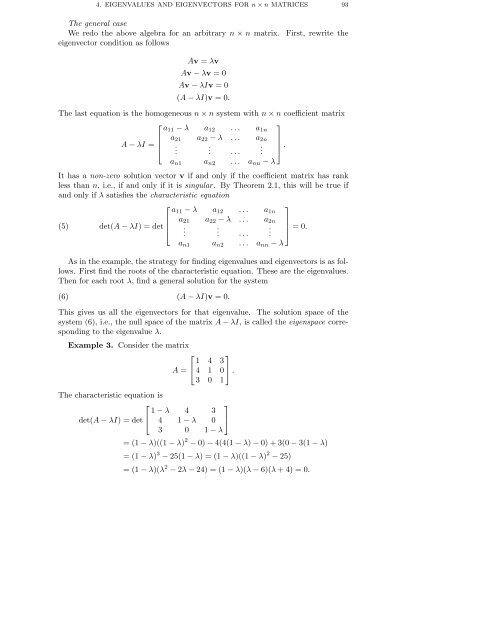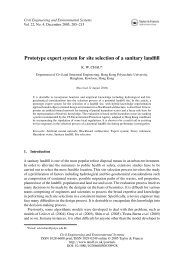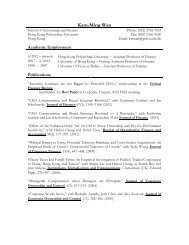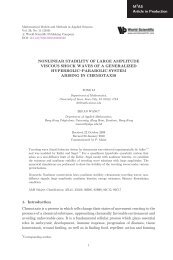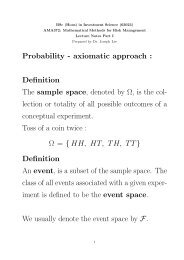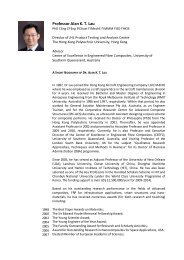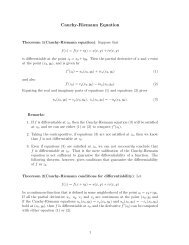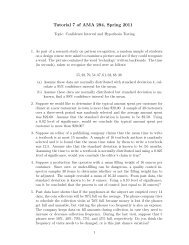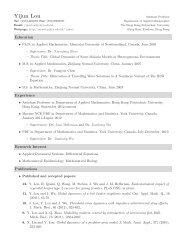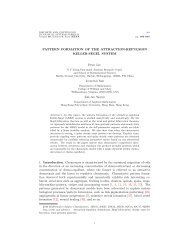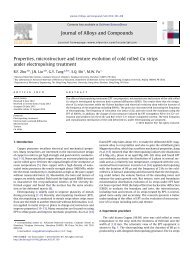DETERMINANTS AND EIGENVALUES 1. Introduction Gauss ...
DETERMINANTS AND EIGENVALUES 1. Introduction Gauss ...
DETERMINANTS AND EIGENVALUES 1. Introduction Gauss ...
Create successful ePaper yourself
Turn your PDF publications into a flip-book with our unique Google optimized e-Paper software.
4. <strong>EIGENVALUES</strong> <strong>AND</strong> EIGENVECTORS FOR n × n MATRICES 93The general caseWe redo the above algebra for an arbitrary n × n matrix.eigenvector condition as followsA − λI =⎢⎣Av = λvAv − λv =0Av−λIv =0(A−λI)v =0.First, rewrite theThe last equation is the homogeneous n × n system with n × n coefficient matrix⎡a 11 − λ a 12 ... a 1n⎤a 21 a 22 − λ ... a 2n. . ... .a n1 a n2 ... a nn − λIt has a non-zero solution vector v if and only if the coefficient matrix has rankless than n, i.e., if and only if it is singular. By Theorem 2.1, this will be true ifand only if λ satisfies the characteristic equation⎡⎤a 11 − λ a 12 ... a 1na(5) det(A − λI) = det ⎢ 21 a 22 − λ ... a 2n⎣ .... ... .a n1 a n2 ... a nn − λ⎥⎦ .⎥⎦ =0.As in the example, the strategy for finding eigenvalues and eigenvectors is as follows.First find the roots of the characteristic equation. These are the eigenvalues.Then for each root λ, find a general solution for the system(6) (A − λI)v =0.This gives us all the eigenvectors for that eigenvalue. The solution space of thesystem (6), i.e., the null space of the matrix A − λI, is called the eigenspace correspondingto the eigenvalue λ.Example 3. Consider the matrix⎡A = ⎣ 1 4 3⎤4 1 0⎦.3 0 1The characteristic equation is⎡det(A − λI) = det ⎣ 1 − λ 4 4 1−λ 30⎤⎦3 0 1−λ=(1−λ)((1 − λ) 2 − 0) − 4(4(1 − λ) − 0) + 3(0 − 3(1 − λ)=(1−λ) 3 −25(1 − λ) =(1−λ)((1 − λ) 2 − 25)=(1−λ)(λ 2 − 2λ − 24) = (1 − λ)(λ − 6)(λ +4)=0.


